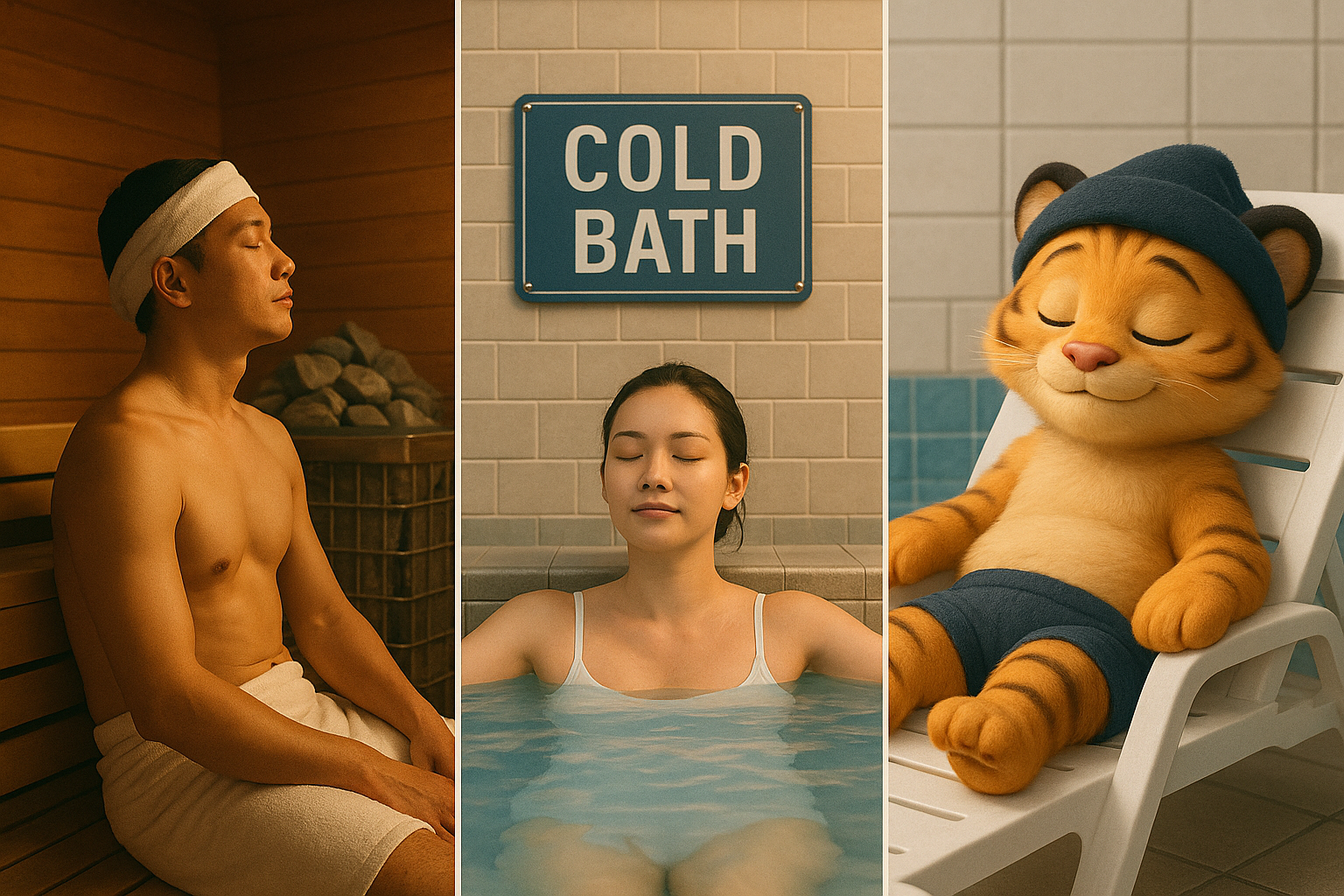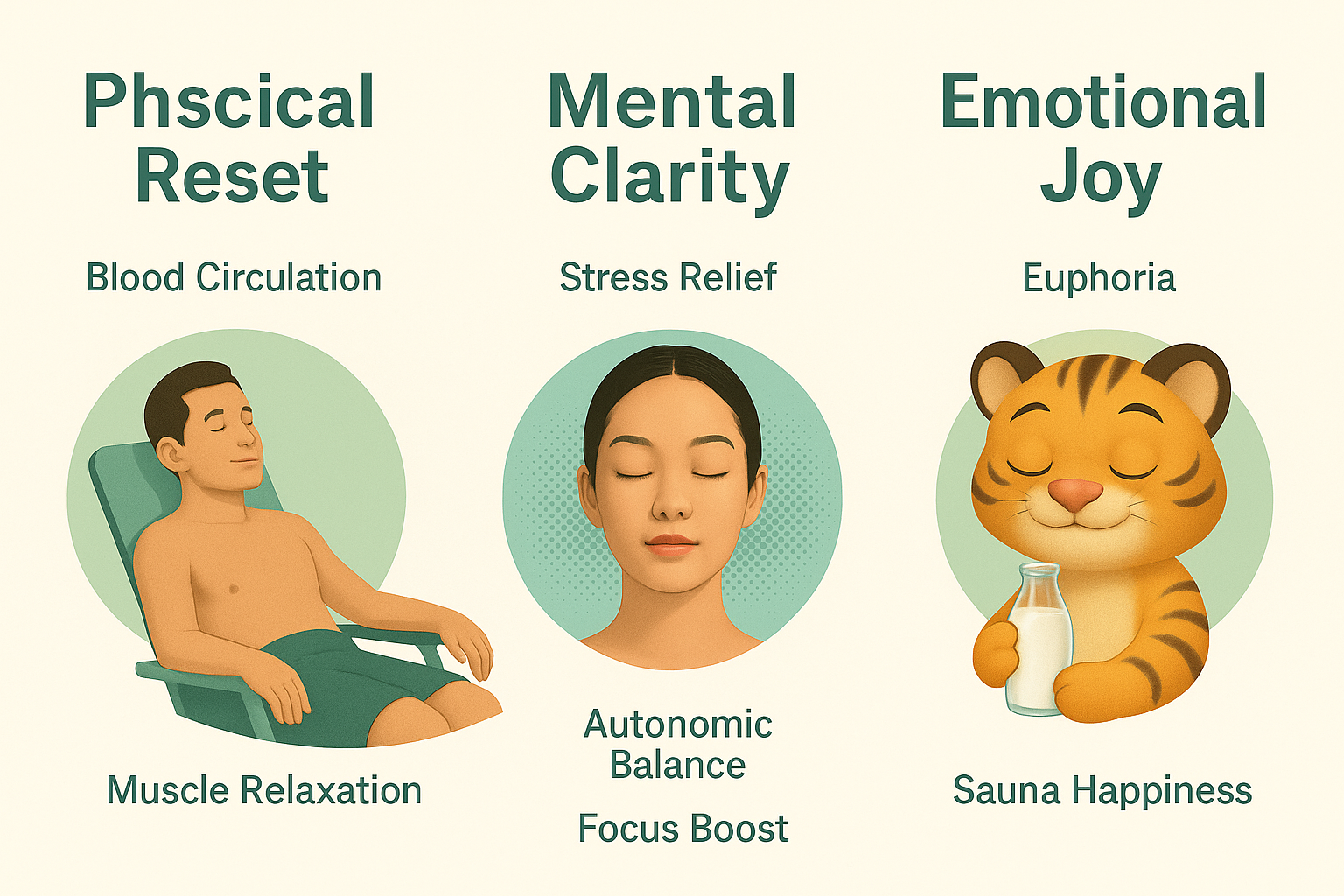Index
🧖♂️ The Rise of “Sakatsu”: Why Japanese Saunas Are Trending
In recent years, Japan has seen a dramatic rise in what locals call “Sakatsu”, short for “Sauna Katsu-dou”—meaning “sauna activity.”
But why now?
Several key trends are fueling this boom:
- 📺 Pop culture influence: Shows like “Sauna no Tatsu ‘The Sauna Man’ “ have romanticized sauna life and made it appealing to a younger generation.
- 🧠 Mental health & mindfulness: Post-pandemic stress made people seek natural ways to relax and reset.
- 📱 Social media buzz: Instagram and YouTube are full of people sharing their sauna journeys and their “totonotta” faces.
In a world of constant pressure, Japan’s sauna culture offers a form of ritualized escape.
🏛 A Brief History of Sauna in Japan
While the concept of heat bathing existed in Japan for centuries through onsen and sento, the sauna as we know it today arrived from Finland in the 1950s.
Here’s how it evolved:
- 🇫🇮 1957: The first Finnish-style sauna was introduced in Japan.
- 🛁 1960s–70s: Saunas began appearing inside sento “public baths” as luxury additions.
- 🏙 2000s onward: Specialized sauna facilities emerged, focusing on unique features like Loryu “steam infusion”, themed saunas, and stylish rest areas.
- 🌟 Modern era: “Sauna culture” became a lifestyle, not just a bath. People now go just for the sauna, even without taking a bath!
Saunas have become a place for deep relaxation, reflection, and even community.
🧼 How to Enjoy a Japanese Sauna: Customs & Terms Explained
Japanese saunas aren’t just about sweating—they’re a full experience.
Here’s a typical flow:
- 🧼 Wash thoroughly before entering “respect is key!”
- 🔥 Enter the dry sauna “usually 80–100°C”
- 💦 Optional: Loryu – adding water to hot stones for intense steam
- 🥶 Cool down in the cold bath “mizuburo“—10–18°C
- 🌬 Sit in an open-air space to breathe, close your eyes, and “totonou ‘reach a meditative bliss’ “
🗣 Common terms you’ll hear:
- Totonou “ととのう”: That perfect moment of clarity and balance after sauna-cold bath-air rest.
- Sakatsu “サ活”: Sauna activity.
- Loryu “ロウリュ”: Steam ritual involving water and essential oils.
This cycle is often repeated 2–3 times per session. It’s not about endurance—it’s about rhythm and recovery.
🧖♀️ Gender Differences & Social Norms
Japanese saunas usually separate men and women, unlike in some Western countries.
Here are some key points:
- 🧴 Nudity is expected, even in same-sex areas. Swimsuits are rare unless in a mixed-gender “spa” setting.
- 🔇 Silence is golden—sauna rooms are places of quiet, not conversation.
- 👀 No tattoos allowed in many traditional places “due to gang associations”, though this is changing slowly.
- 🧖♀️ Women-only sauna hours are becoming more common for safety and comfort.
Etiquette is everything. Think of it as a cultural ritual, not just a physical activity.
💡 Global Interest: What Surprises Foreign Visitors?
Foreign visitors are often amazed by:
- How quiet and meditative the sauna spaces are
- The obsession with “cold baths”—why would anyone jump into freezing water!?
- How people schedule their week around “totonou” time
- The food served afterward—”sauna meals ‘sauna meshi‘ ” like curry, ramen, and milk bottles
For travelers, experiencing a Japanese sauna is more than just relaxation—it’s a glimpse into a culture that values inner peace, discipline, and wellness.
P.S.
Saunas have the same function as meditation, allowing you to organize your thoughts, improve the quality of your sleep, and rejuvenate your body, so they are one of my favorite hobbies. Please enjoy Japanese saunas, which are a little different from those overseas. Due to the impact of COVID-19, there are many saunas in Japan.
またね “Matane”!



コメント